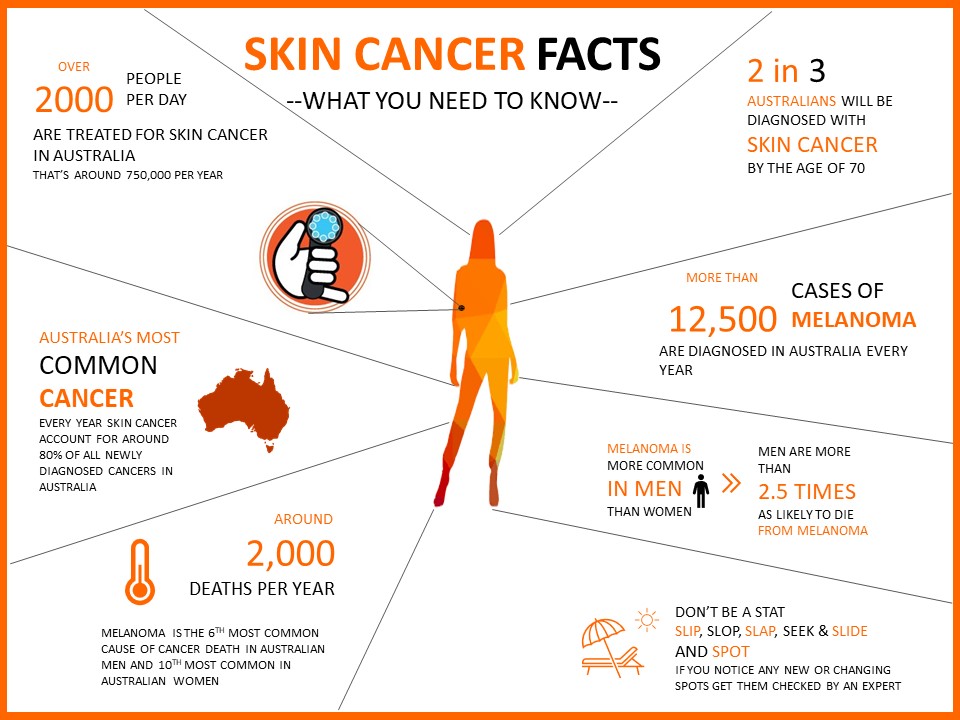
Skin Cancer Facts
If you are diagnosed with a skin cancer you have a 50% increased risk of further skin cancers developing within 2 years.
Non-melanoma skin cancers are far more common than melanoma, and make up over 85% of all skin cancer diagnoses.
The two main types of non-melanoma skin cancers are basal cell carcinoma and squamous cell carcinoma.
Skin cancers grow unpredictably, with some very quickly expanding or invading deeper layers, while others are very slow in getting bigger.
The larger the skin cancer, the bigger the excision needed to remove the cancer, the more scarring involved and the higher the cost of treatment. Medicare rebates are based on their size when removed.
It is best to get your skin cancer attended to as soon as possible. All skin cancers need to be removed, and most require some form of surgery.
Most skin cancers treated appropriately and in a suitable time frame by an experienced skin surgeon will not recur or leave disfiguring scarring.
While it is true that any doctor can cut out a skin cancer, not all possess the surgical skill needed to repair the surgical defect with the minimum amount of scarring and deformity. You will live a long time with the visible consequences of your decision, so please choose wisely.














